



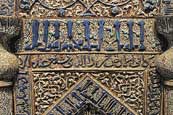
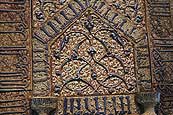


Iran, Kashan, main mosque on Maydan. 1226. Finished by al-Hasan bin Arabshah. Stonepaste ceramic, underglaze and lustre painted. H.: 2.8 m.
Inv. I.5366
Pub.: Islamic Art, p. 48; Grabar, no. 280, p. 179, and dust jacket; Hattstein, p. 449
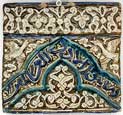
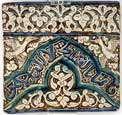
Iran, Kashan. 13th c. CE. Stonepaste ceramic, underglaze and lustre painting.
Inv. Nr. I.13/67a,b

Iran, Kashan. Safar 739/Aug-Sept. 1338. Stonepaste ceramic, underglaze and lustre painting.
Inv. Nr. I.1009
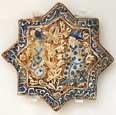
Iran, Kashan. 14th c. CE. Stonepaste ceramic, underglaze and lustre painting.
Inv. Nr. I.3873
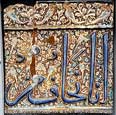
Iran, Kashan. Ca. 1307 CE. Stonepaste ceramic, underglaze and lustre painting.
Inv. Nr. I.3899


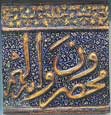
Iran, Kashan. End 13th-beg. 14th c. CE. Lajvardina ware.
Inv. Nr. I.5372-5374

Iran, Kashan; Imamzade Yahya in Varamin. 661 AH/1262-63 CE. Stonepaste ceramic, underglaze and lustre painting.
Inv. Nr. I.3864
Compare others from, apparently, the same site, in the Victoria and Albert Museum, 1837_1892 etc.

Domgan (N. Iran). 665 AH/1266-7 CE. Stonepaste ceramic, underglaze and lustre painting. L: 48 ; W: 55 cm.
Inv. Nr. I.3865-3870
Pub.: Islamic Art, pp. 102-103.

Iran, Kashan. 2nd half of 13th c. Stonepaste ceramic, underglaze and lustre painting.
Inv. Nr. I.6216


Iran, Kashan or Rayy. 13th c. Stonepaste ceramic with under- and over-glaze; gold leaf (mina'i technique)
Inv. Nr. I.6218
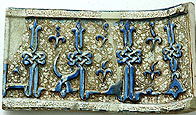
Iran, Kashan; from mihrab of a mosque in Natanz. Ca. 1307. Stonepaste ceramic, underglaze and lustre painting. 39 x 69 cm. The large Kufic script reproduces the profession of faith; the small Nashi script Sura 76 of the Quran. Tiles with the continuation of the inscription are in the Musée des Beaux Arts, Lyon (France).
Inv. I.1277
Pub.: Islamic Art, p. 102



Konya, Anatolia. 3rd quarter 13th c. CE. Faience mosaic. H: 3.95 m.; W: 2.8 m.
Inv. Nr. I.7193
Pub.: Islamic Art, p. 62-65